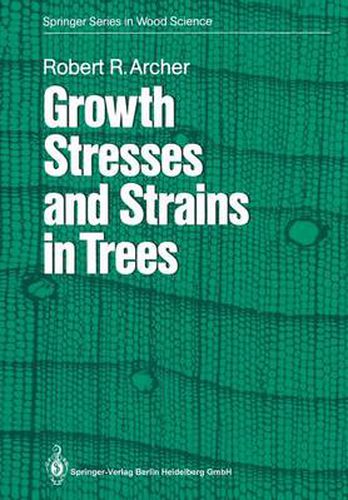Readings Newsletter
Become a Readings Member to make your shopping experience even easier.
Sign in or sign up for free!
You’re not far away from qualifying for FREE standard shipping within Australia
You’ve qualified for FREE standard shipping within Australia
The cart is loading…






This title is printed to order. This book may have been self-published. If so, we cannot guarantee the quality of the content. In the main most books will have gone through the editing process however some may not. We therefore suggest that you be aware of this before ordering this book. If in doubt check either the author or publisher’s details as we are unable to accept any returns unless they are faulty. Please contact us if you have any questions.
Although over 40 years have passed since Jacobs (1945) convincingly established the basic radial pattern of residual growth stress in growing trees, yet this phenomenon is still not widely appreciated in wood science and technology circles. This is in spite of the fact that the presence of these stresses of sizeable magnitudes has long been recognized as a primary cause of shakes and splits in logs as well as the warping of lumber sawn in the green condition. The presentation of the subject of growth stresses in trees presents some special problems due to the wide range of specialists who potentially might have an interest in the subject. For example, tree physiologists interested in questions such as the relation of mechanical stress to stem taper and the role of reaction wood and gravity forces in determining tree crown form encounter growth stress models. Silvi culturists interested in the relation ofthinning practices to wood quality find that wood properties are correlated with growth stress levels which are in turn significantly changed by cutting practices. Wood techno logists interested in the relation of residual growth stress gradients in green logs to the dimensional quality of sawn and seasoned lumber are forced to take a more quantitative approach to the effect of growth stresses than might have been the case in the past.
$9.00 standard shipping within Australia
FREE standard shipping within Australia for orders over $100.00
Express & International shipping calculated at checkout
This title is printed to order. This book may have been self-published. If so, we cannot guarantee the quality of the content. In the main most books will have gone through the editing process however some may not. We therefore suggest that you be aware of this before ordering this book. If in doubt check either the author or publisher’s details as we are unable to accept any returns unless they are faulty. Please contact us if you have any questions.
Although over 40 years have passed since Jacobs (1945) convincingly established the basic radial pattern of residual growth stress in growing trees, yet this phenomenon is still not widely appreciated in wood science and technology circles. This is in spite of the fact that the presence of these stresses of sizeable magnitudes has long been recognized as a primary cause of shakes and splits in logs as well as the warping of lumber sawn in the green condition. The presentation of the subject of growth stresses in trees presents some special problems due to the wide range of specialists who potentially might have an interest in the subject. For example, tree physiologists interested in questions such as the relation of mechanical stress to stem taper and the role of reaction wood and gravity forces in determining tree crown form encounter growth stress models. Silvi culturists interested in the relation ofthinning practices to wood quality find that wood properties are correlated with growth stress levels which are in turn significantly changed by cutting practices. Wood techno logists interested in the relation of residual growth stress gradients in green logs to the dimensional quality of sawn and seasoned lumber are forced to take a more quantitative approach to the effect of growth stresses than might have been the case in the past.